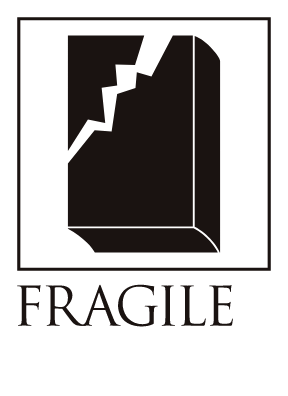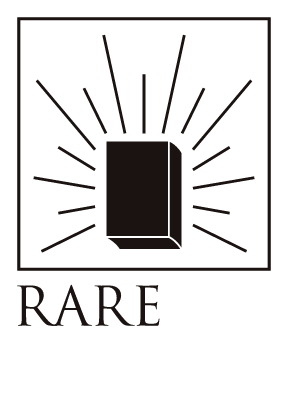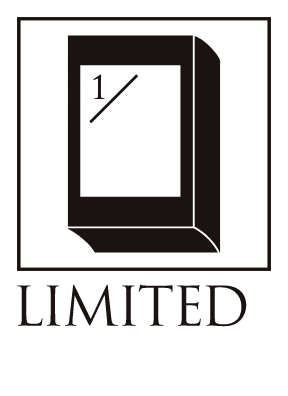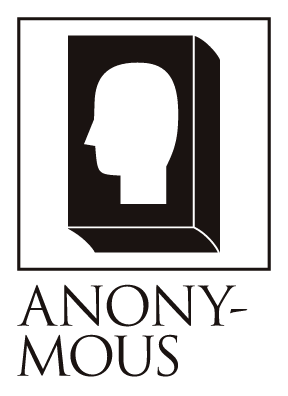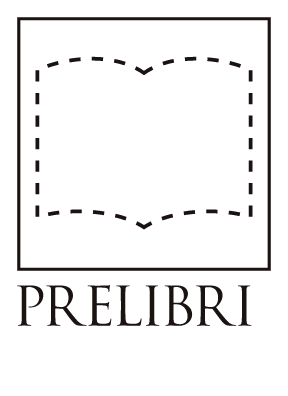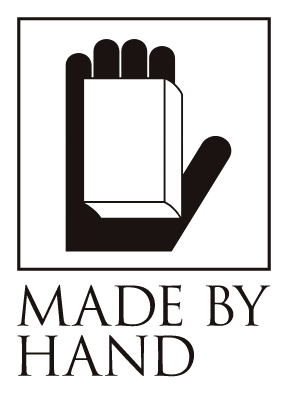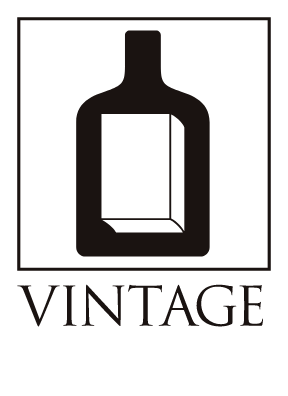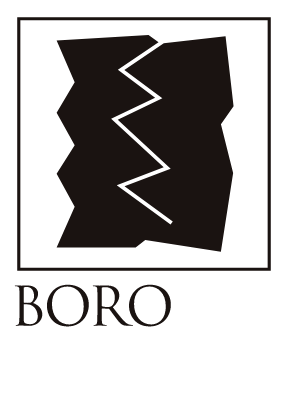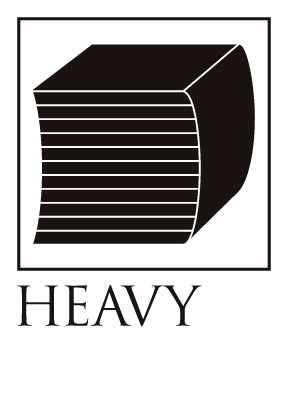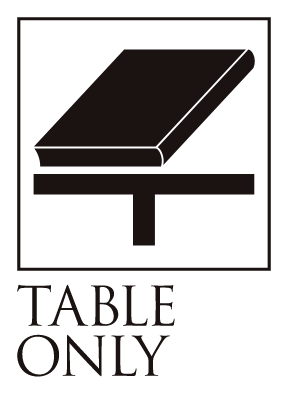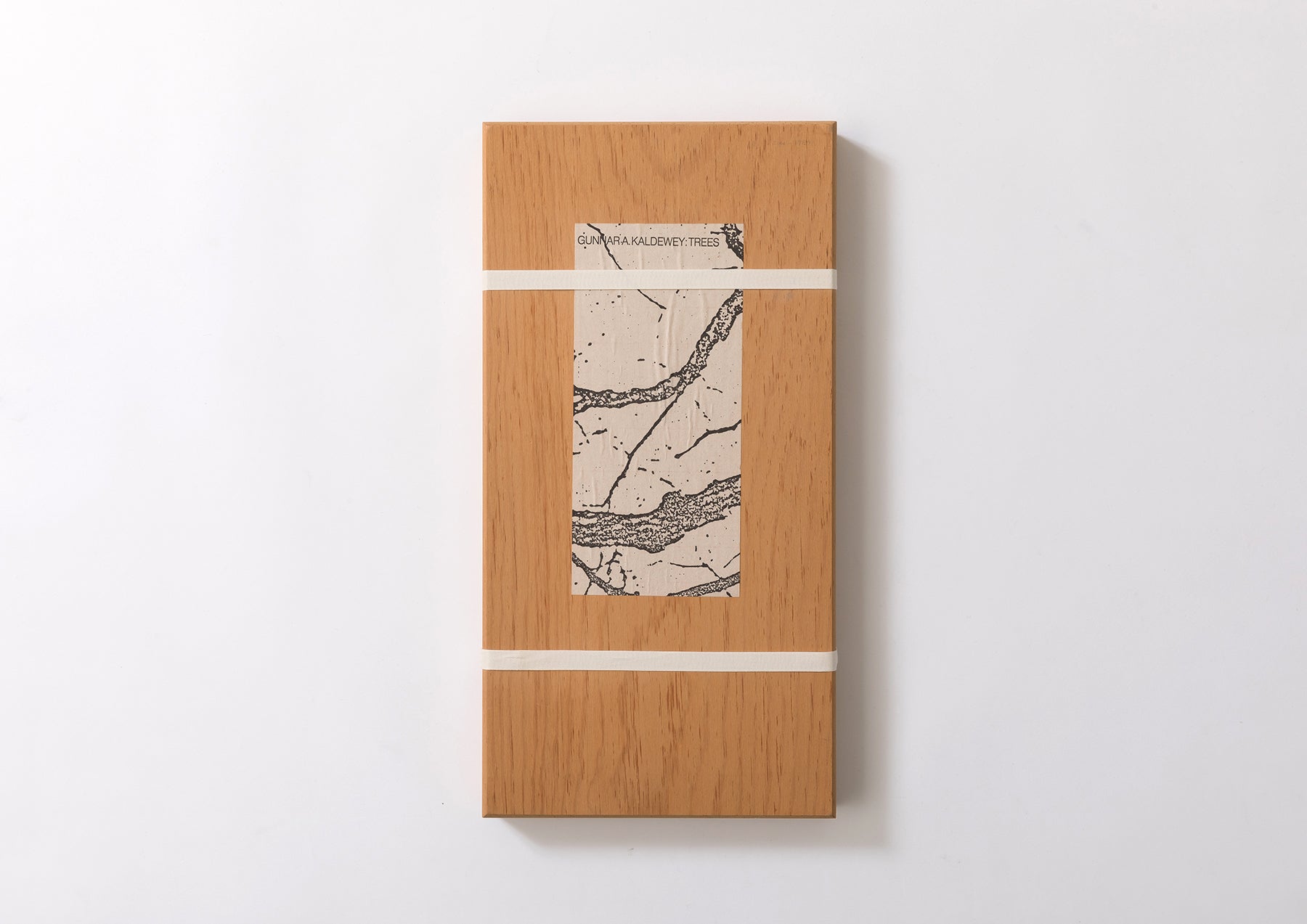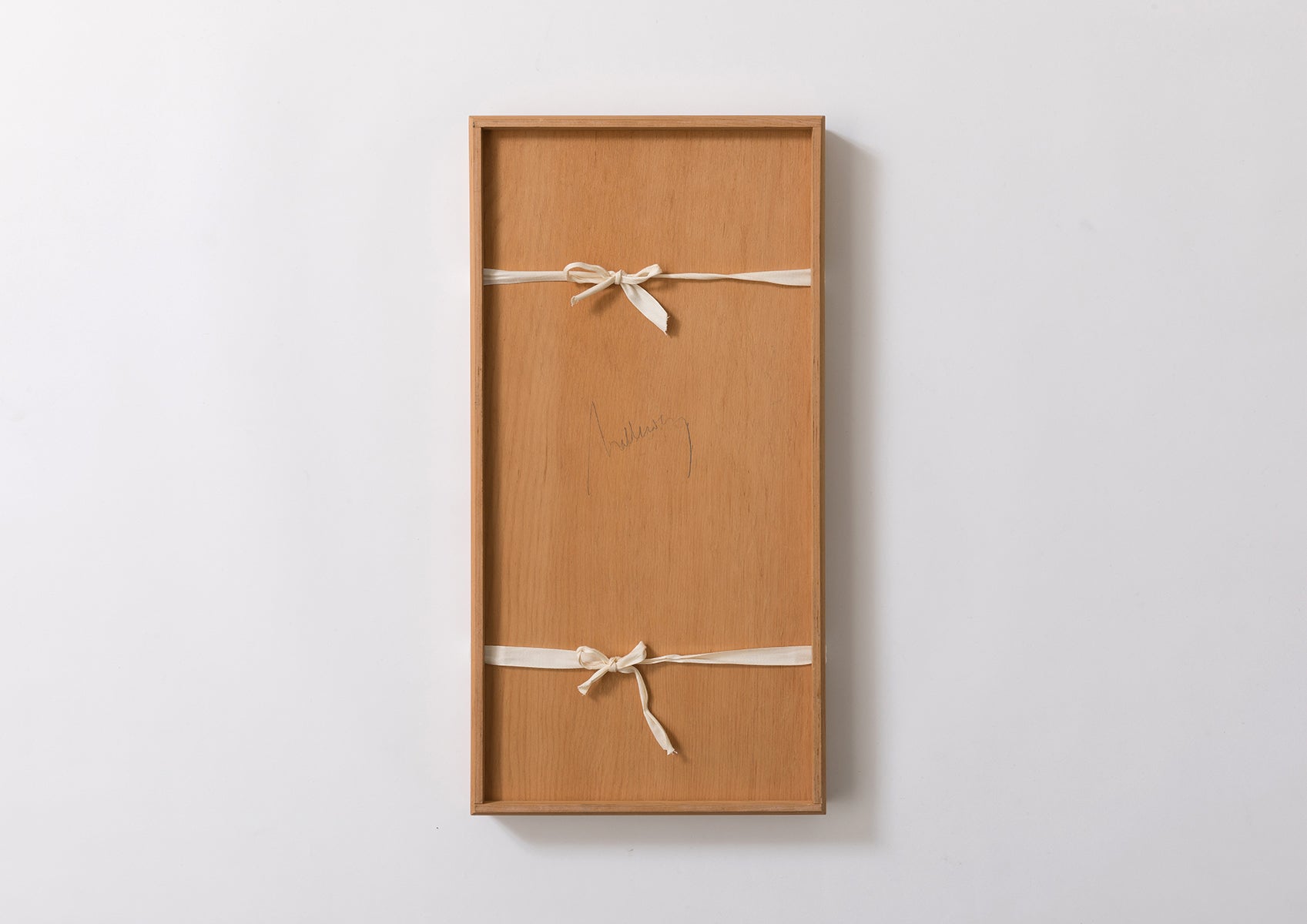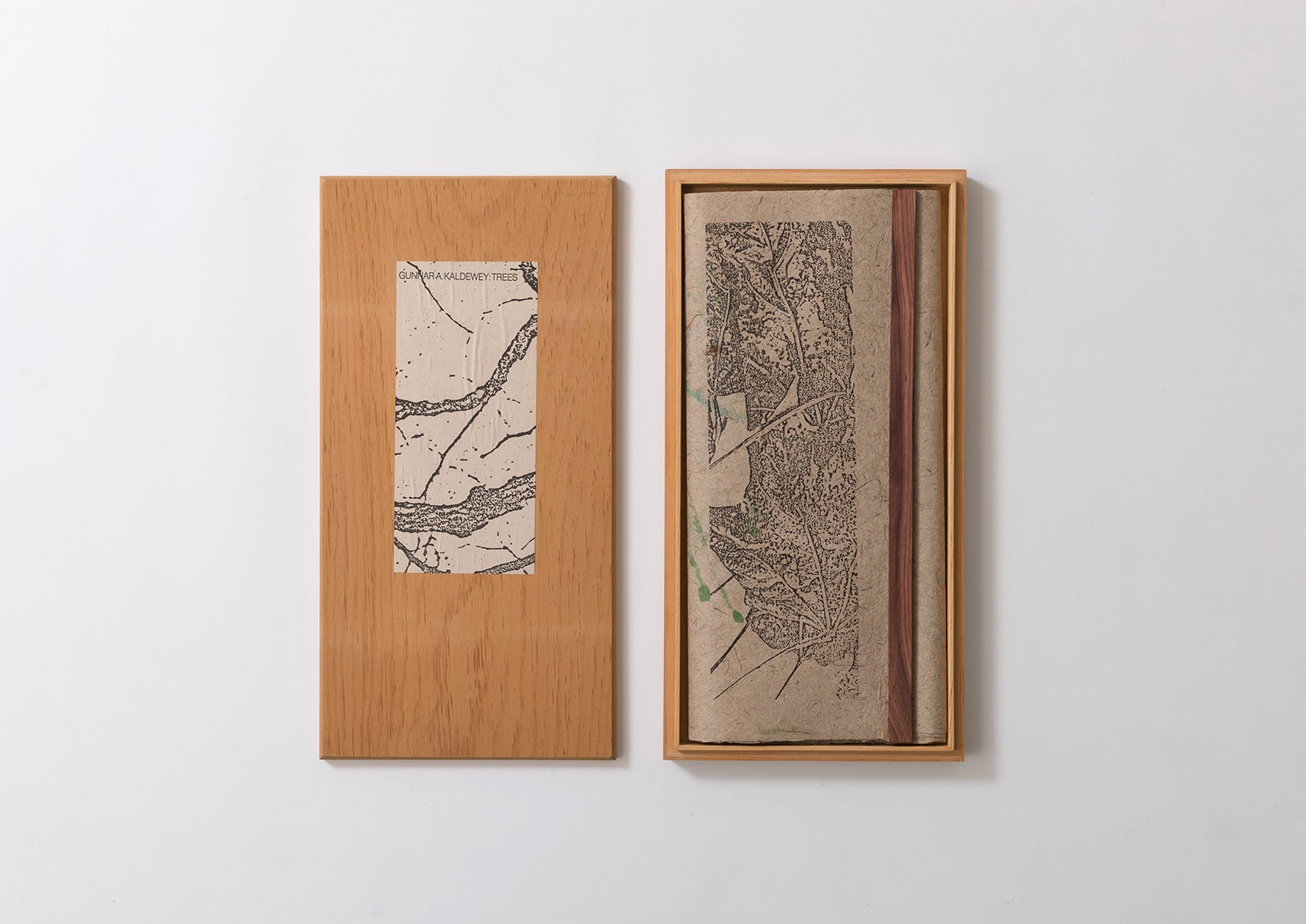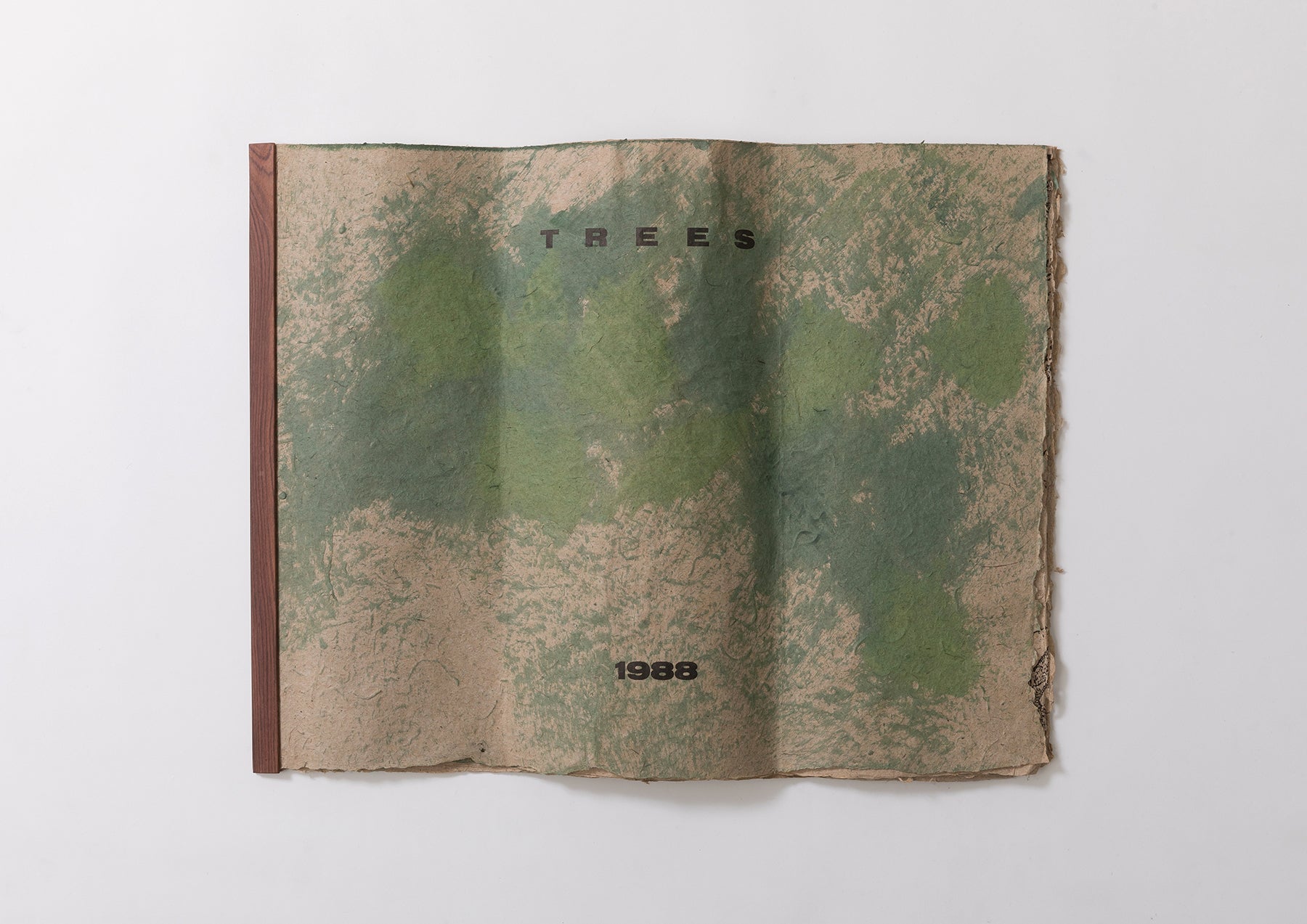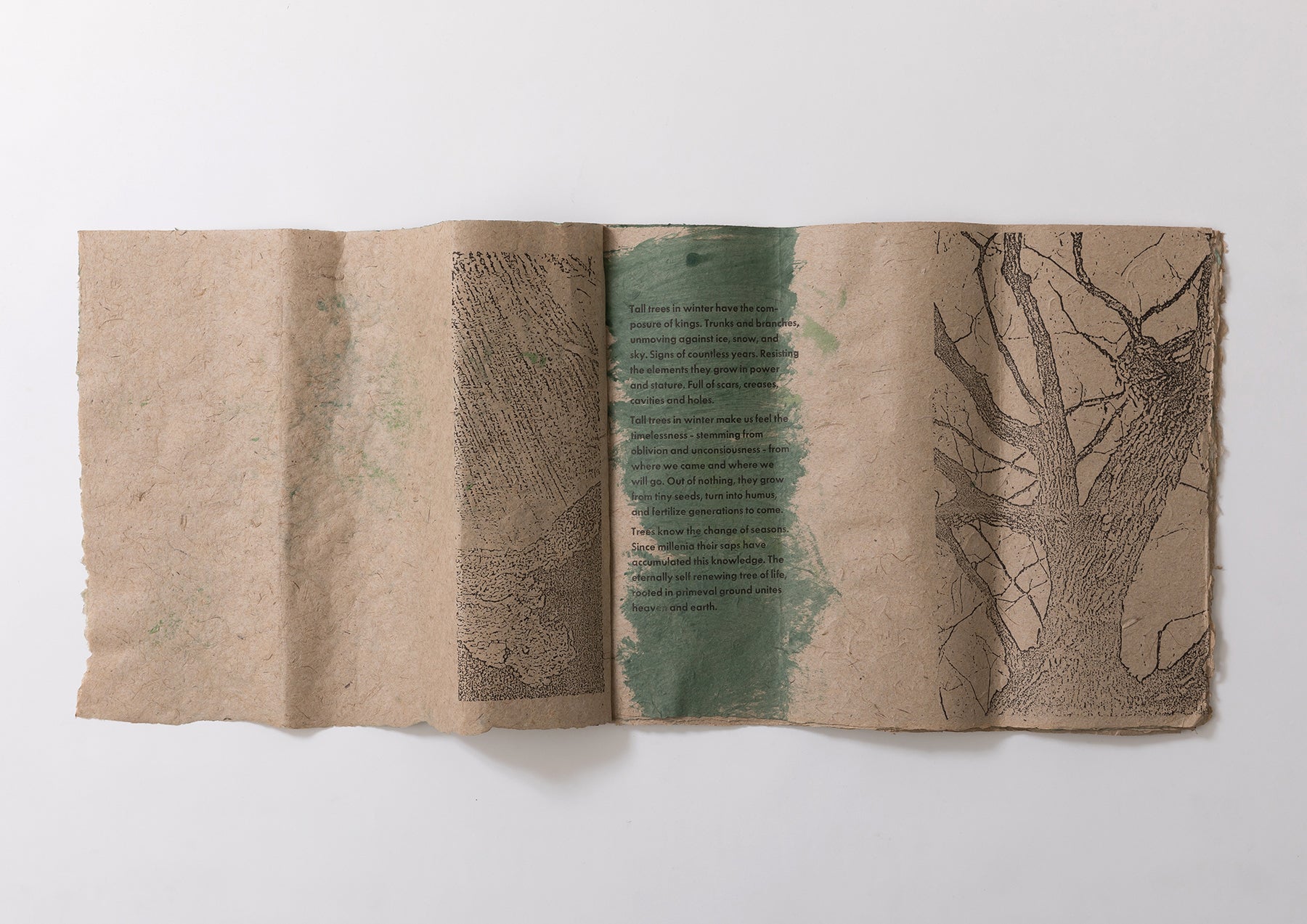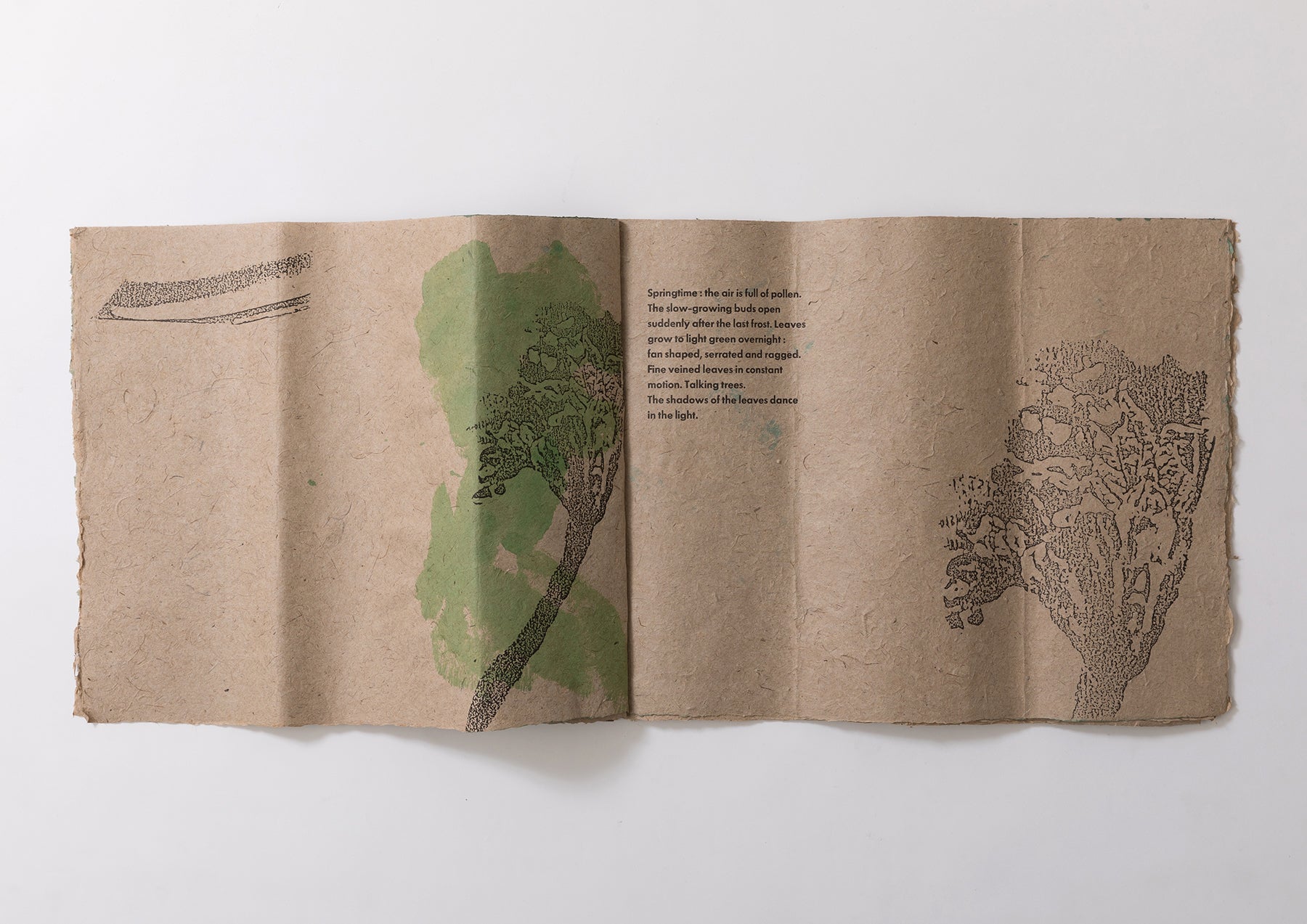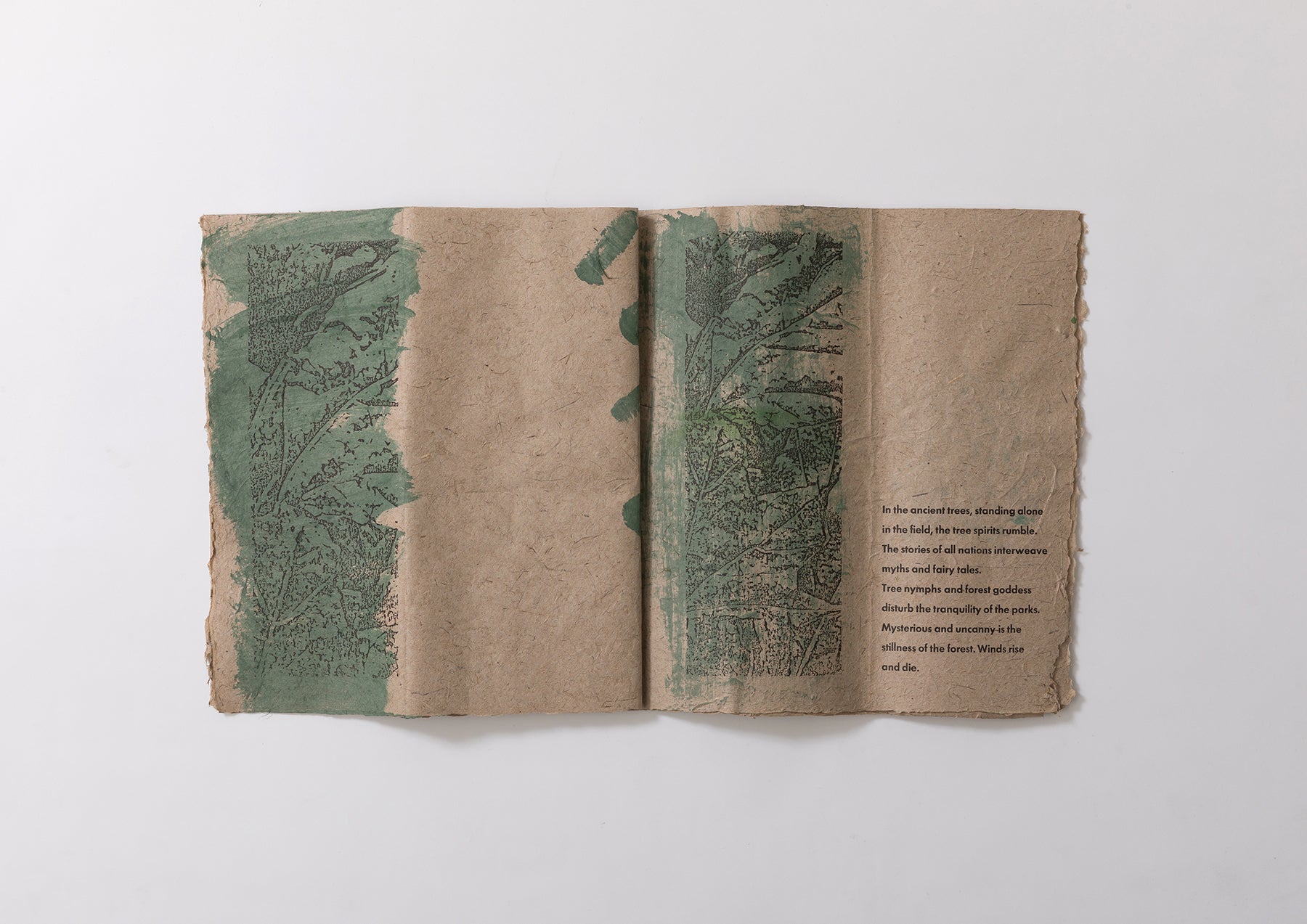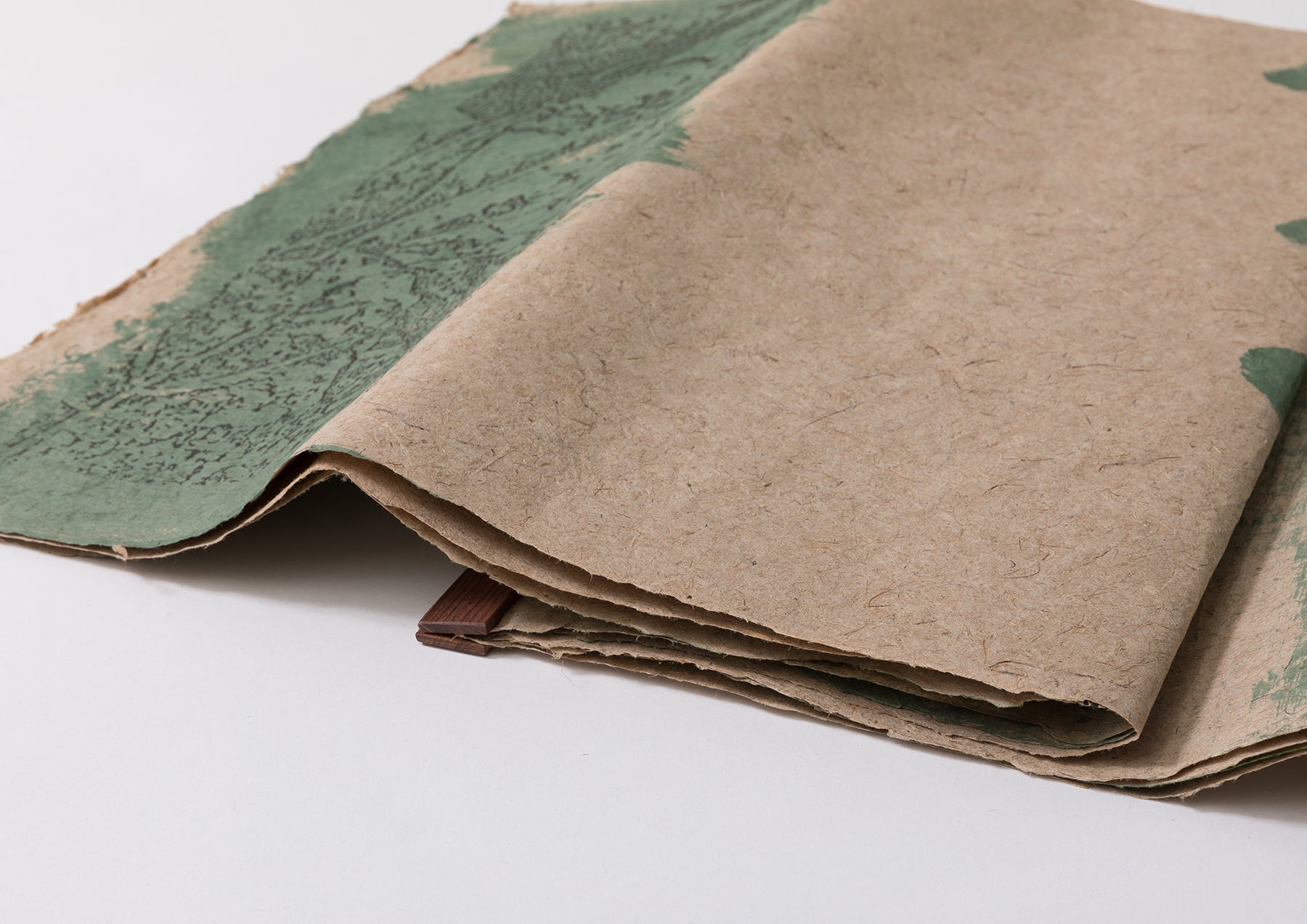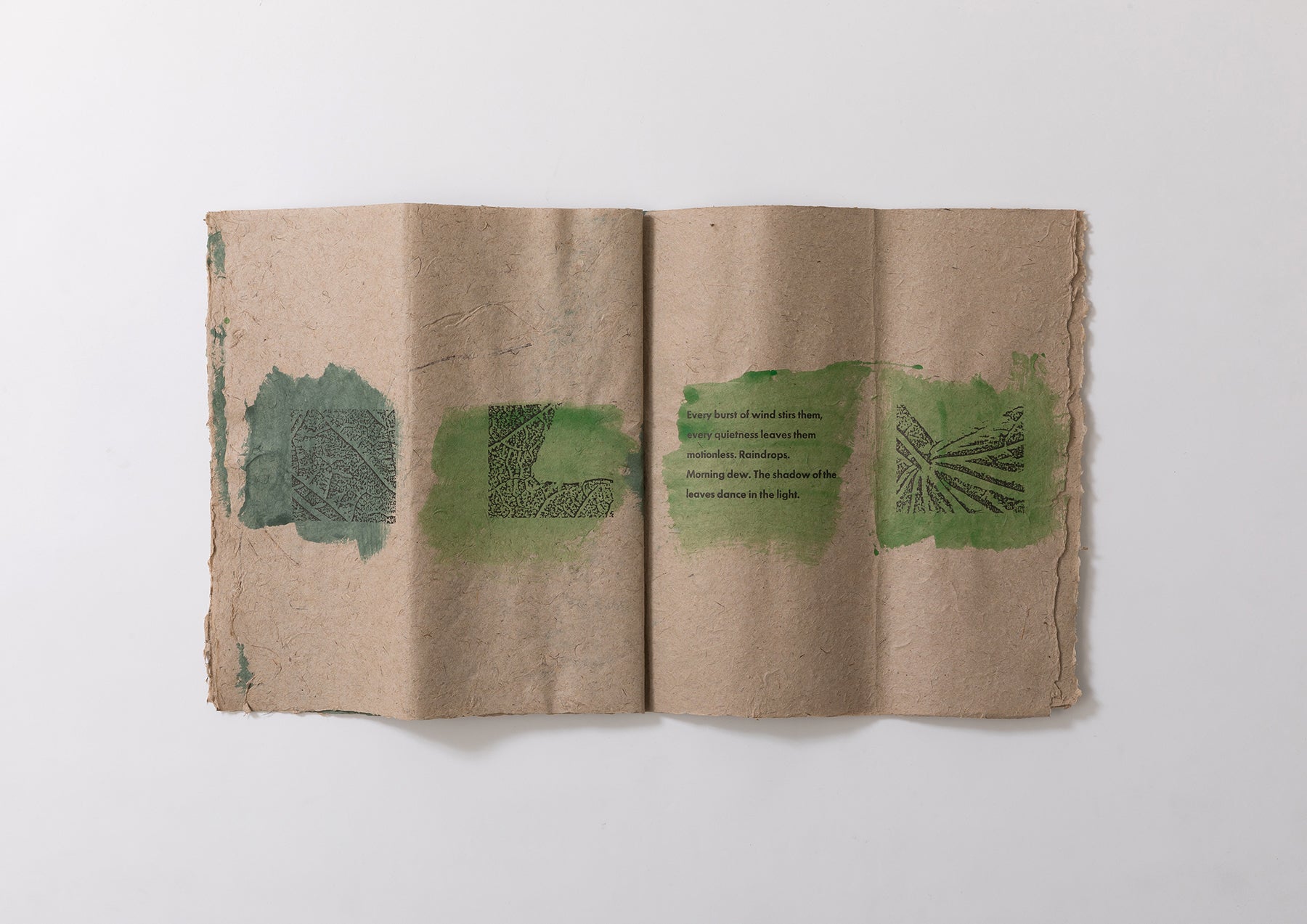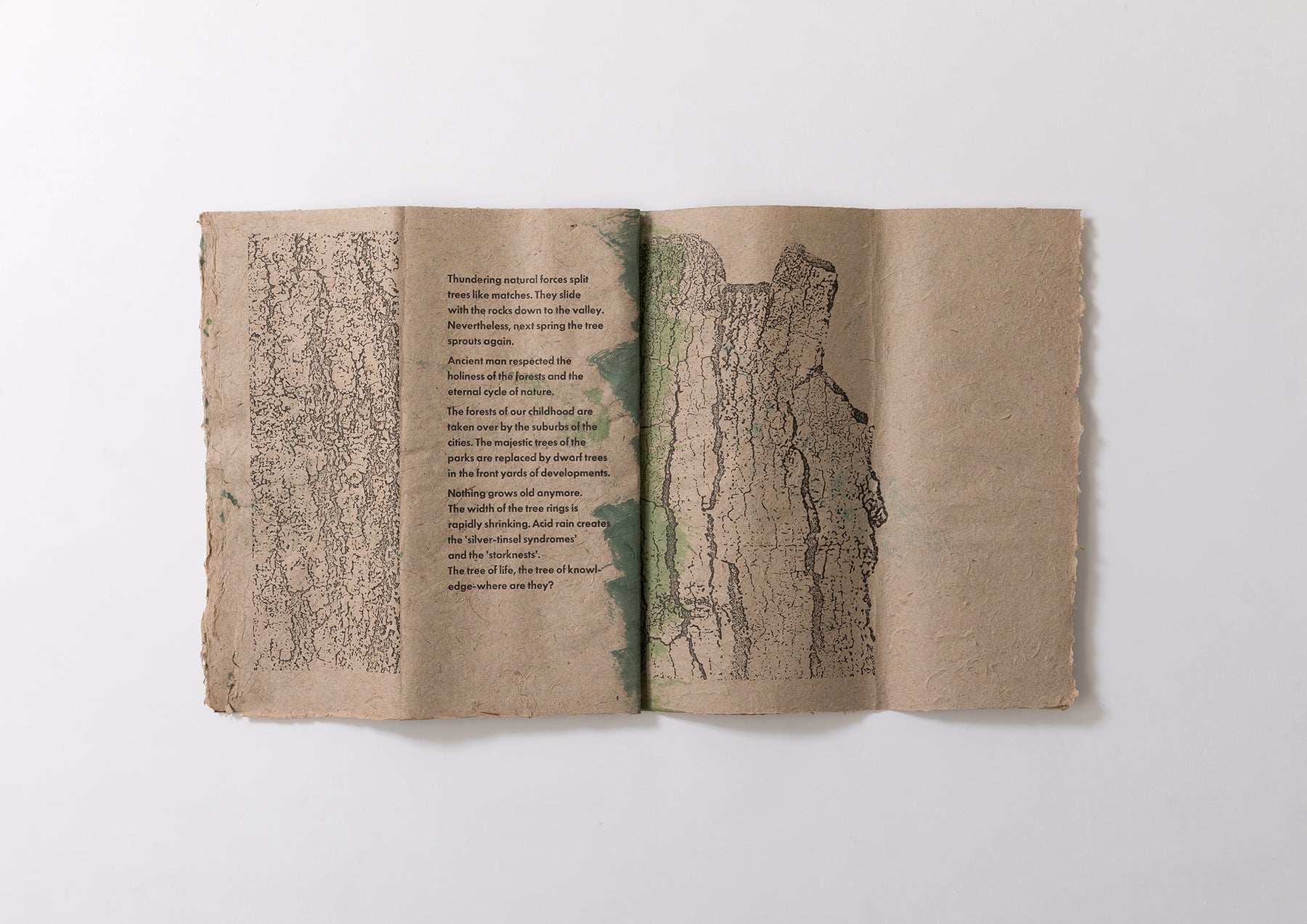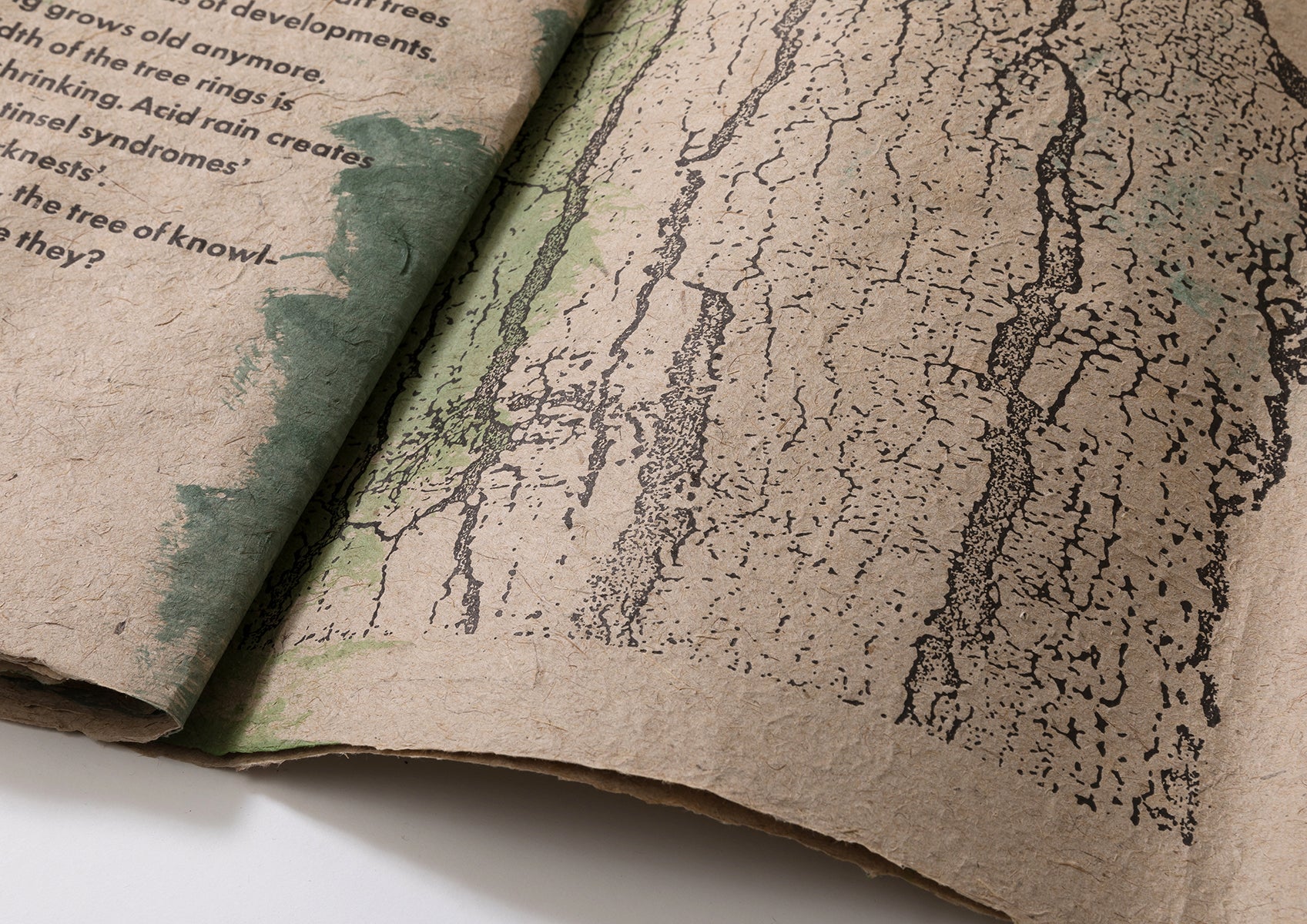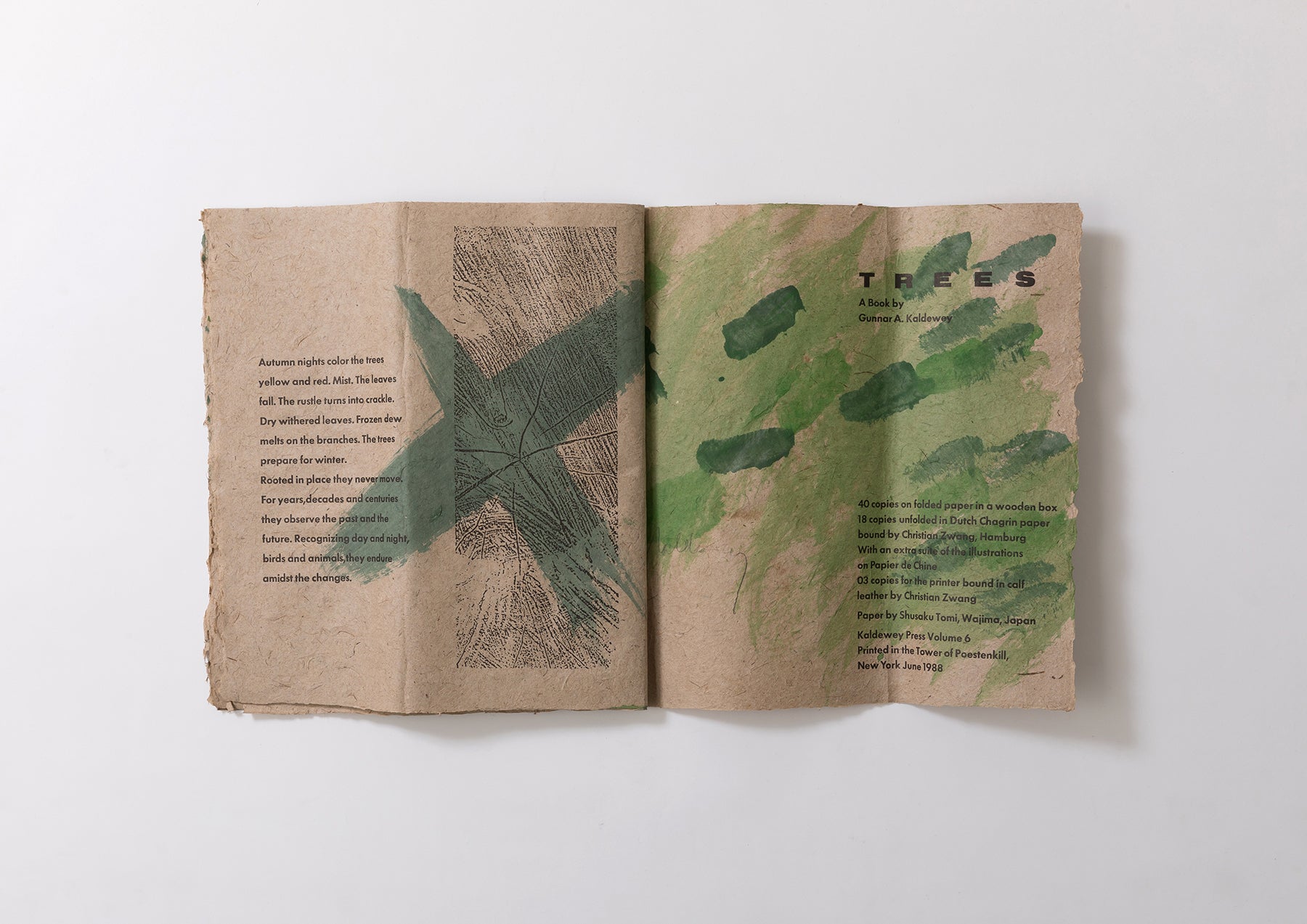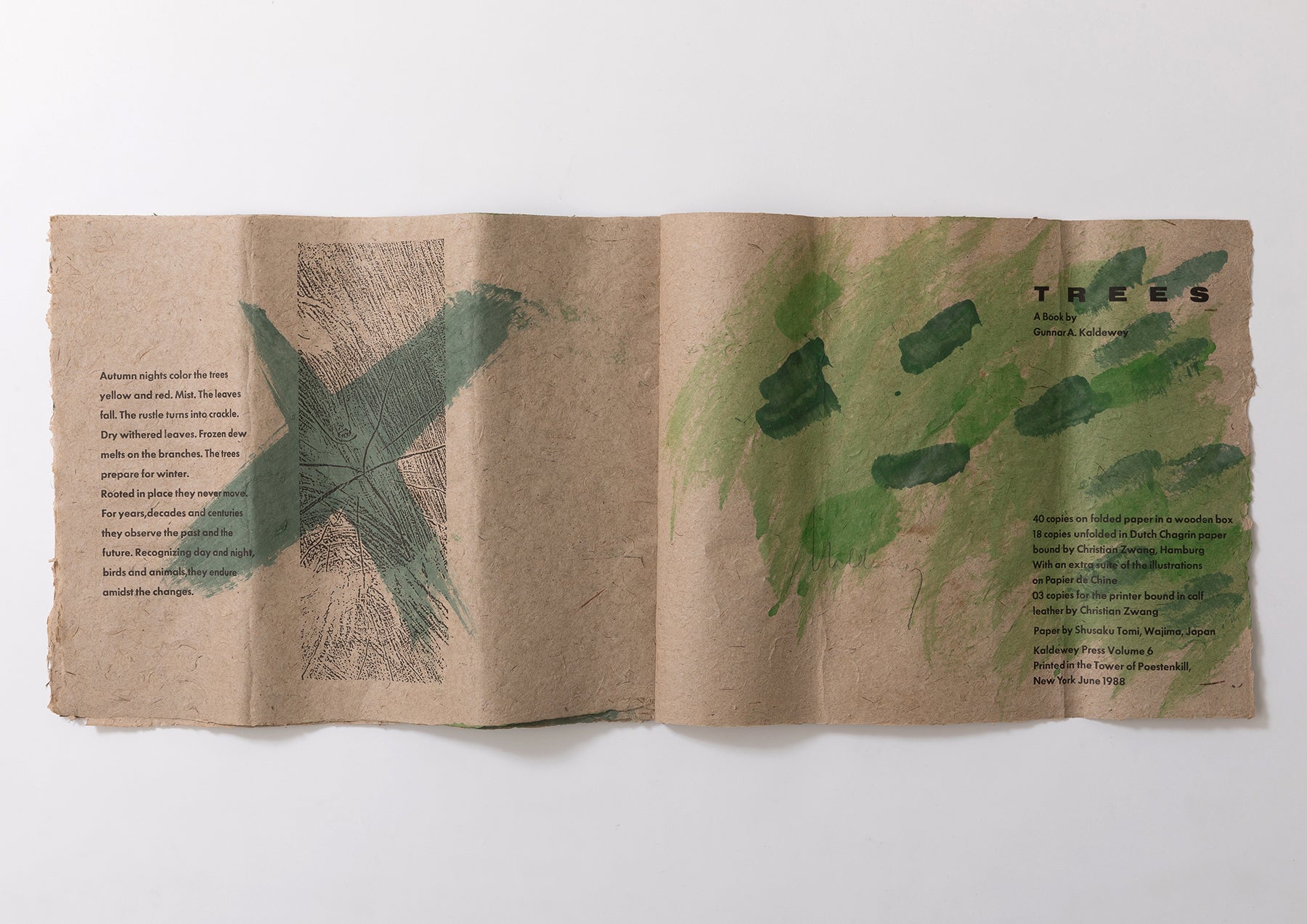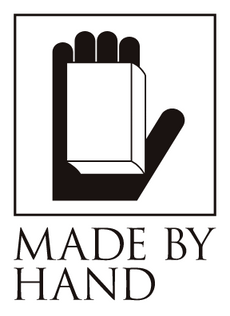Trees
Bibliographic Details
- Title
- Trees
- Author
- Gunnar A. Kaldewey
- Publisher
- Kaldewey Press
- Year
- 1988
- Size
- book: h490 x w635mm (unfolded) / case: h527 x w267 x d50 mm
- Weight
- book 290g / with case 1,270g
- Language
- 英語
- Binding
- 三つ折り、ブラジリアンローズウッドの背
- Materials
- 遠見周作が手漉きした杉皮紙
- Edition
- Limited 40 edition
- Condition
- Very Good
カルドウェイ本人のサインつき。きめの粗い茶色の杉皮紙7枚に、さまざまな緑の色合いの手彩色と、17のリノカットがモノプリントされています。本体は観音開きで3分の1の寸法に折りたたまれ、プライウッドの木箱に収められます。箱のふたには、大きなラベルが貼られ、木箱全体は、リネンの平紐で固定されます。
Wajima cedar bark paper and
New York Maple
Haute couture.
This is a masterpiece published in 1988 by Kaldway Press in New York, one of the world's leading artbook publishers. The author is Gunnar Kaldway himself.
As the title of the book is written in the plural "Trees," this book does not focus on any particular trees. The book is written in poetry with bold prints, depicting a universal perspective on the situation in which "trees" are placed and the shapes of "trees."
The material for the illustration is a maple tree. It is a giant tree over 200 years old that grows in Poestenkill, New York, about a three-hour drive from Manhattan. The printing is done by Kaldway himself using letterpress. The type is 30-point Futura (as stated in the colophon). And the paper is cedar bark paper by Tono Shusaku. Only 40 copies were made in the world.
The value of this book lies in the fact that it is wrapped in Tono Shusaku's cedar bark paper.
Tonomi Shusaku is a paper maker who set up a papermaking facility in Wajima on the Noto Peninsula. He moved to Jinko, on the edge of the Noto Peninsula, which was not originally a washi-producing region, and while he made a living by making wrapping paper for Wajima gorokuwan bowls, he began making washi in earnest around 1949. His unique washi, which does not rely on paper mulberry but incorporates natural elements such as soil and grass from the surrounding area, is called Notonigyo washi, and he began receiving orders from all over the world.
As the name suggests, cedar bark paper is a type of washi paper made from the bark of cedar trees, and was invented by Tono Shusaku. It all started after the war, when he was struggling to get hold of paper mulberry, and he came across some cedar bark that had been trampled on and discarded in the corner of a lumber mill. The image of the cedar bark, wet and golden from being hit by the rain, was burned into his memory. So he gave up on making washi paper from paper mulberry, but at first it didn't work out. The coarse, thick fibers of the cedar were extremely difficult to handle, so after much trial and error, he finally succeeded in making it, mixing in fibers from Noto hiba.
This book was published in 1988, the year of Shusaku Tomi's death. The colophon states that the paper was "Paper by Shusaku Tomi, Wajima, Japan" and that it was made on Shusaku Tomi's cedar bark paper. If so, this may have been his last work.
Thus, Gunnar Kaldway chose Shusaku Tonoumi of Wajima, a master of natural art, to complete his concept of "Trees." He ordered cedar bark paper, traveled to Poestenkill to create illustrations from a 200-year-old maple tree, and released a limited number of copies through his private press, Kaldway Press. This is indeed a remarkable work.
Text by Osamu Kushida
